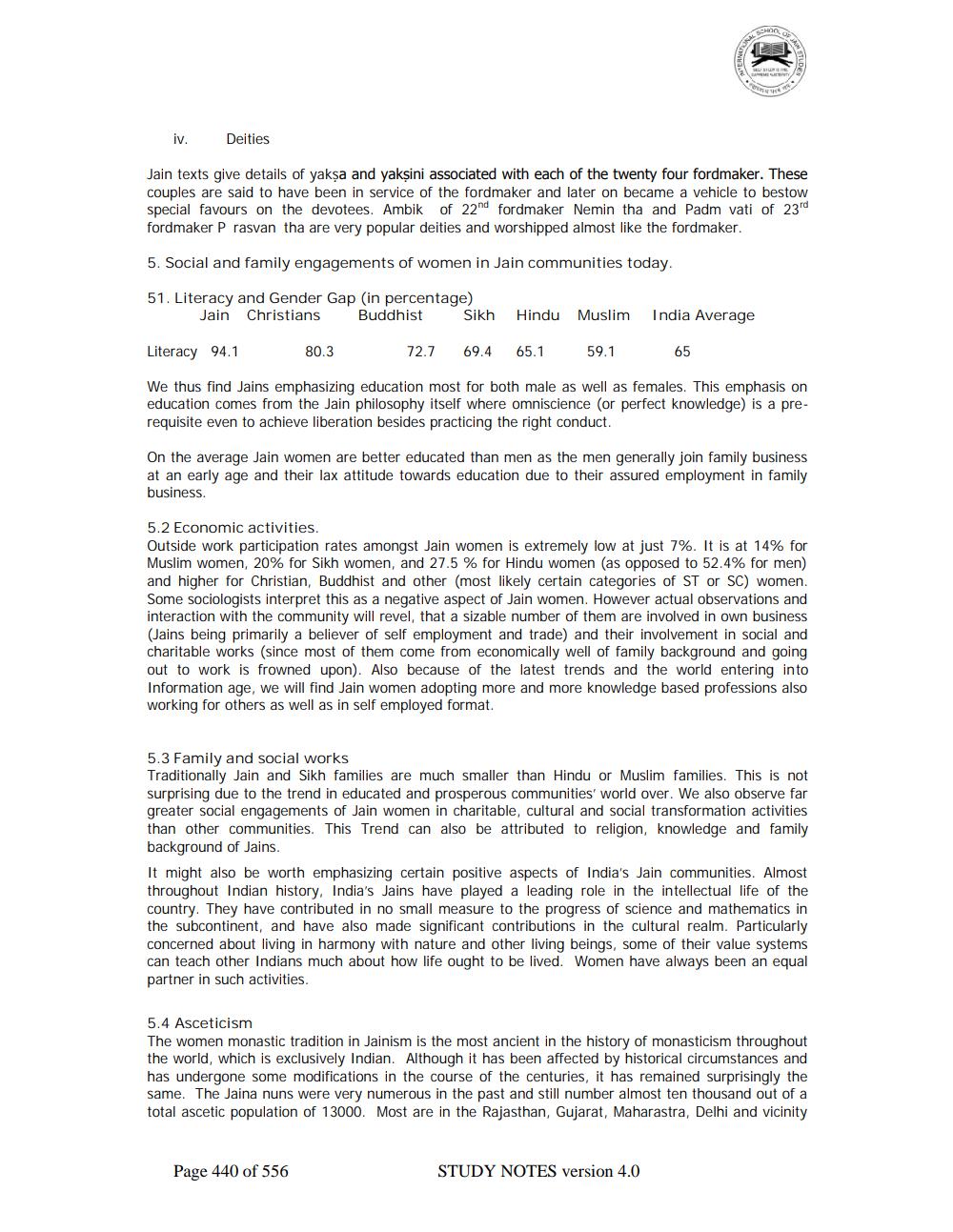________________
iv.
Deities
Jain texts give details of yaksa and yaksini associated with each of the twenty four fordmaker. These couples are said to have been in service of the fordmaker and later on became a vehicle to bestow special favours on the devotees. Ambik of 22nd fordmaker Nemin tha and Padm vati of 23rd fordmaker P rasvan tha are very popular deities and worshipped almost like the fordmaker.
5. Social and family engagements of women in Jain communities today.
51. Literacy and Gender Gap (in percentage)
Jain Christians Buddhist Sikh
Hindu Muslim
India Average
Literacy
94.1
80.3
72.7
69.4
65. 1
59.1
65
We thus find Jains emphasizing education most for both male as well as females. This emphasis on education comes from the Jain philosophy itself where omniscience (or perfect knowledge) is a prerequisite even to achieve liberation besides practicing the right conduct.
On the average Jain women are better educated than men as the men generally join family business at an early age and their lax attitude towards education due to their assured employment in family business.
5.2 Economic activities. Outside work participation rates amongst Jain women is extremely low at just 7%. It is at 14% for Muslim women, 20% for Sikh women, and 27.5 % for Hindu women (as opposed to 52.4% for men) and higher for Christian, Buddhist and other (most likely certain categories of ST or SC) women. Some sociologists interpret this as a negative aspect of Jain women. However actual observations and interaction with the community will revel, that a sizable number of them are involved in own business (Jains being primarily a believer of self employment and trade) and their involvement in social and charitable works (since most of them come from economically well of family background and going out to work is frowned upon). Also because of the latest trends and the world entering into Information age, we will find Jain women adopting more and more knowledge based professions also working for others as well as in self employed format.
5.3 Family and social works Traditionally Jain and Sikh families are much smaller than Hindu or Muslim families. This is not surprising due to the trend in educated and prosperous communities' world over. We also observe far greater social engagements of Jain women in charitable, cultural and social transformation activities than other communities. This Trend can also be attributed to religion, knowledge and family background of Jains. It might also be worth emphasizing certain positive aspects of India's Jain communities. Almost throughout Indian history, India's Jains have played a leading role in the intellectual life of the country. They have contributed in no small measure to the progress of science and mathematics in the subcontinent, and have also made significant contributions in the cultural realm. Particularly concerned about living in harmony with nature and other living beings, some of their value systems can teach other Indians much about how life ought to be lived. Women have always been an equal partner in such activities.
5.4 Asceticism The women monastic tradition in Jainism is the most ancient in the history of monasticism throughout the world, which is exclusively Indian. Although it has been affected by historical circumstances and has undergone some modifications in the course of the centuries, it has remained surprisingly the same. The Jaina nuns were very numerous in the past and still number almost ten thousand out of a total ascetic population of 13000. Most are in the Rajasthan, Gujarat, Maharastra, Delhi and vicinity
Page 440 of 556
STUDY NOTES version 4.0




